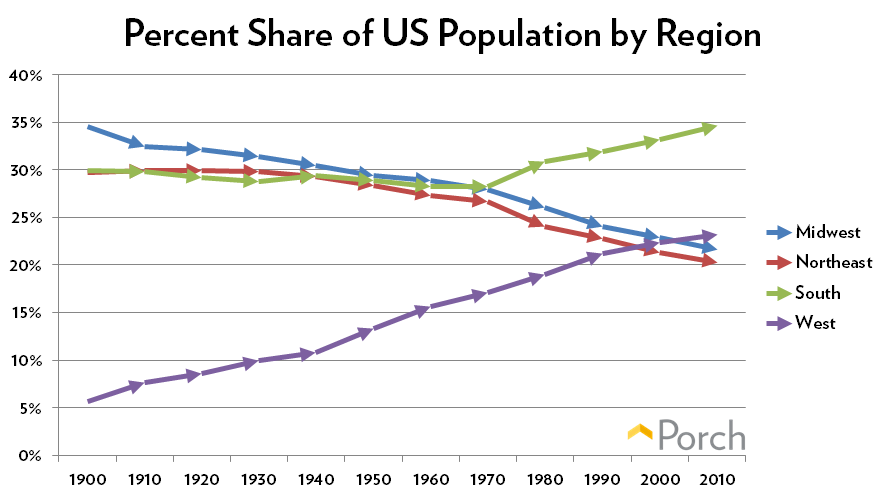Let’s talk about population.
Here’s a chart of how the population of the United States breaks down by region over each of the last 12 censuses:

What’s not surprising about this chart is the consistent, massive growth in the west—from just 6 percent of the country’s population in 1900 to 23 percent in 2010. The west was still fairly “wild” 114 years ago. The Transcontinental Railroad was only 31 years old, Butch Cassidy and the Sundance Kid were still alive, and most houses were still lit by candles and oil lamps. In more recent decades, growth in the west has been driven by a strong and diverse economy.
But what’s the deal with the sudden surge in the south that starts around 1970? Here’s a clue…

Commercially available home air conditioning debuted in the 1950s but really started to gain a foothold in the south in the ’60s and ’70s. Today, virtually every home in the south is equipped with an air conditioner. Here are the share of homes in each region that have air conditioning as of 2012:
Northeast: 82%
South: 99%
Midwest: 93%
West: 66%
So which southern states have seen the largest gains in their share of the population since 1970? Texas and Florida. Texas grew from 3.3 percent of the nation’s population in 1970 to 6.1 percent in 2010, while Florida went from 5.5 percent to 8.1 percent.
In other words, thanks to air conditioning, nearly 1 in 12 Americans live in Florida.
Top image credit: Black Lion Heating & Air Conditioning




